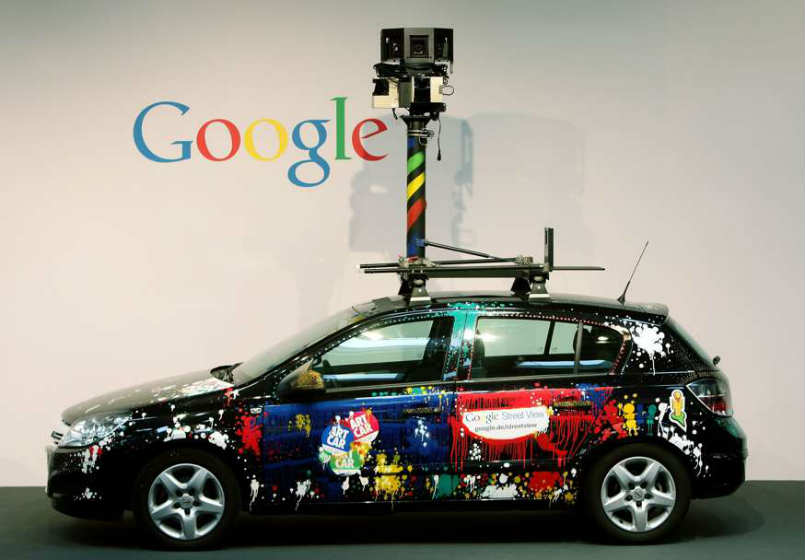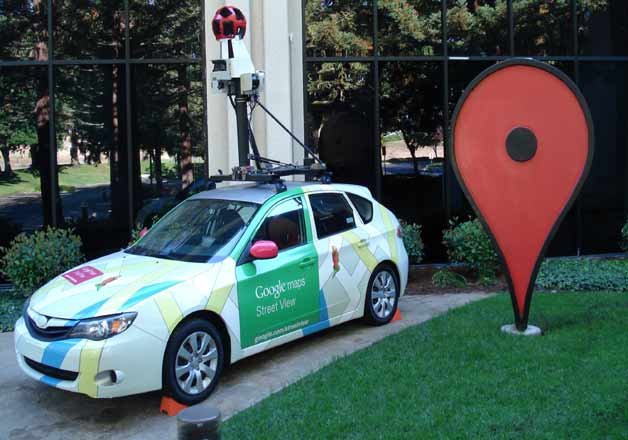



 (4 ratings)
(4 ratings)
The Indian government rejected Google plans to cover India through the Google Street View, according to a report on Thursday. Street View allows Google to put Indian cities, tourists spots, hills, and rivers in an application in which one can explore through 360-degree, panoramic and street-level imagery. It also allows a similar view inside locations such as museums, arenas, restaurants and small businesses.
As we know that Street View was launched in 2007 in five US cities to give people, what Google calls a “feet on the ground” experience and instant access to the places you want to see—even before you leave the house. By 2010, Internet search giant Google expanded its Street View mapping service to the world’s southernmost continent—Antarctica. This meant that users were now able to navigate around the snow-capped mountains, icebergs of Antarctica and even spot several Penguin colonies captured by Google’s cameras—places that few people may ever get to visit in person. Since then, the mapping service has been growing extensively. At last count, Street View has expanded their 360-degree panoramic views to include locations on all seven continents, covering 65 plus countries and has traveled seven million plus miles.

The latest city to have been mapped by Google’s Street View team is the “marvelous city” of Rio de Janeiro, in anticipation of the 2016 Olympics Games, which is expected to draw millions of people to Brazil this summer. The Street View team has collected up-to-date Street View imagery of Rio’s streets and neighborhoods and indoor imagery of more than 200 hotels, restaurants, and bars across the city. so those heading to Rio can get a feel for the area ahead of time.
However, Street View has always been dogged by controversy, be it in India or abroad. Reports in the Western media suggest that its global expansion had caused privacy and security issues. Many felt that taking exterior shots of people’s homes represent an unwarranted intrusion into their lives. The company has often been accused of collecting WiFi data while its Street View cars and trucks toured cities across the world taking photographs.
Also Read: Google Brings Android Auto in India, Cars To Offer Support Soon
In Europe, particularly, Street View has always been a challenge for Google, since European privacy laws and cultural norms are more sensitive to privacy issues than those in the US. It is a known fact that Google uses technology to blur faces and license plates in its Street View images. But European data protection authorities are more stringent and also require that Google notifies the public before the Street View cars start driving on European streets and limit the amount of time that it keeps unblurred images of faces and license plates.In Germany, this was not enough. So Google allowed Germans to request that it blur pictures of their homes, too. When Street View went online for Germany’s largest cities in 2010, the company said 3% of German households opted out.
In May 2011, Google had extended its Street View project to India, by starting to collect 360-degree street level imagery in Bengaluru. But the Internet company was forced to stop collecting street-level imagery in Bengaluru after it received a letter from the commissioner of police asking the company to suspend its operations due to security reasons.

In 2015 Google announced a partnership with the Archaeological Survey of India (ASI) and other institutions to bring a comprehensive range of India’s heritage sites online, including national icons like the Taj Mahal, Safdarjung Tomb, and the Ellora Caves. Street View technology thus made possible new panoramic views of 31 Indian archaeological sites and monuments on Google Maps.
According to Thursday’s report, the home ministry has conveyed to Google that its plans to cover India through the Google Street View is rejected due to security reasons, especially after terrorists were known to use Google maps to plan their attack on India’s military base in Pathankot earlier this year. Even the 2008 terrorist attacks in Mumbai is believed to have involved photographic reconnaissance of targets by Pakistani-American David Coleman Headley.
Google does have privacy policies around Street View that include a fairly detailed blurring policy. Both face and license plate blurring technology is applied to all of Google’s Street View images. The policy states that “this technology is designed to blur all identifiable faces and license plates within Google-contributed imagery. If you see a face or a license plate that requires additional blurring, or if you would like us to blur your entire house or car, submit a request using the report a problem tool. We will also blur your entire house, car, portions thereof if you submit a request to us for blurring. Please note, however, that once Google blurs an image the effect is permanent. If you submit a request to have your personal home blurred from Google Street View imagery, all historical and future images of your home will also be blurred.”
Also Read: Google Internet balloon enters Sri Lanka for Project Loon Tests
Additionally, Street View images are not real time. “Our images show only what our vehicles were able to see on the day that they drove past the location.” This means that content you see could be anywhere from a few months to a few years old. Clearly, these policies are not adequate in countries like India and Google needs to be more sensitive to India’s security concerns. Mint contacted both Google and the director of internal security in the government but both declined to comment on the issue.
Must Visit Our Google+ Community Page For Latest And Updated Technology Happenings Around The Globe.